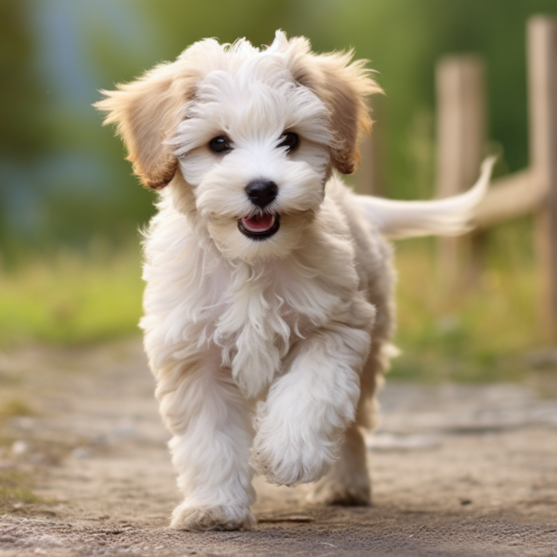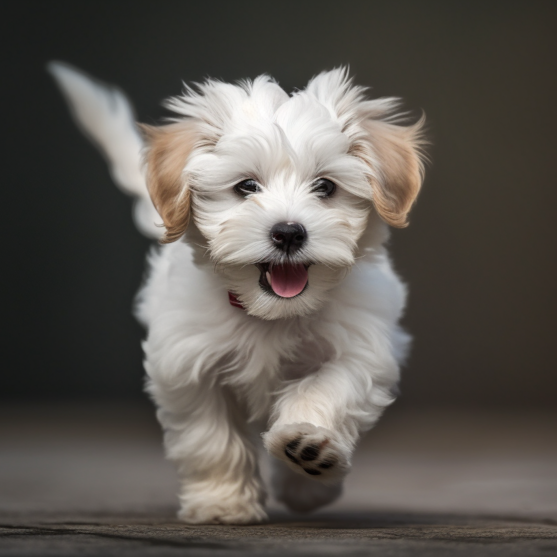Havapoo Breed Information


The Havapoo is a small, affectionate companion dog that blends the loyal charm of the Havanese with the intelligence and elegance of the Miniature Poodle. Sometimes called the Poovanese or Havanoodle, this hybrid was bred for closeness, comfort, and connection—bringing together two people-focused breeds into one soft, steady companion.
Everything about the Havapoo points toward companionship. They love staying near their people and settle in easily as part of the daily routine. Whether napping in a sunny spot, following from room to room, or curling up for the night, they like being part of it all. Their size and temperament make them easy to live with, and their low-shedding coat adds to their appeal for allergy-conscious homes.
This breed fits well in many settings. Havapoos are content in apartments, homes with yards, or any space where there’s regular interaction and a little room to move. They stay cheerful without being high-strung and carry a gentle, playful spirit that makes them easy to welcome into just about any lifestyle.
Characteristics
- Affectionate and people-focused – Havapoos build close bonds with their families and prefer to be near their people. They enjoy quiet time just as much as lighthearted play.
- Playful but gentle – They bring a cheerful energy to the home without being loud or overly excitable. Most stay balanced and easy to handle, even in smaller spaces.
- Adaptable to different homes – Whether in an apartment or a house with a yard, Havapoos adjust easily. They do best when they’re part of the daily routine and not left alone for long.
- Small and manageable – Most Havapoos weigh between 10 and 20 pounds, depending on which parent they take after. They’re easy to carry, easy to travel with, and comfortable in tight spaces.
- Low-shedding and allergy-friendly – Their coat is typically soft and curly or wavy, with minimal shedding. While no dog is fully hypoallergenic, Havapoos are often a good match for allergy-sensitive homes.
- Naturally social – This breed tends to greet new people with ease and usually gets along well with other pets. They’re polite, curious, and often quick to make friends.
- Smart and alert – Thanks to their Poodle heritage, Havapoos are sharp thinkers. They enjoy learning, remember routines quickly, and pick up on emotional cues with ease.
- Quiet but aware – They may bark when something feels off, but they’re not known for being noisy. Once they feel secure, they settle down without much fuss.
- Emotionally tuned in – Havapoos are sensitive to tone and environment. They thrive in calm, affectionate homes where kindness is part of the daily rhythm.

Appearance
The Havapoo is a small, soft-coated dog with a warm expression and a gentle, approachable look. As a cross between the Havanese and the Miniature or Toy Poodle, the breed shows a wide range of variation in coat texture, color, and overall features—but always with a tidy, well-proportioned shape that fits comfortably into everyday life.
Most Havapoos weigh between 10 and 20 pounds and stand around 9 to 14 inches tall, depending on their lineage. Their body is compact and slightly longer than it is tall, with a level back and a steady, balanced frame. They carry themselves with a light step and often move with a soft bounce, especially when excited or curious.
The coat is one of the Havapoo’s most noticeable features. It’s typically wavy or curly, with a texture that feels soft and light to the touch. Some dogs inherit the silkier hair of the Havanese, while others take after the Poodle with tighter curls. The coat grows continuously and needs regular grooming, but it sheds very little—making it a popular choice for those who prefer low-shedding breeds.
Color variety is broad. Havapoos can be cream, white, black, brown, gray, apricot, or a mix of these shades. Many have markings or blended tones that give them a one-of-a-kind look. Their coats often change slightly as they mature, with colors lightening or deepening over time.
Eyes are round, dark, and expressive, often full of curiosity or calm affection. Ears drop softly to the side, covered in waves or curls that blend into the surrounding coat. The tail may curl over the back or extend behind with a gentle wave, depending on coat length and structure.
Temperament
The Havapoo is a warm, easygoing companion with a steady personality and a strong desire to be close. Everything about this breed centers on connection—they like being part of the home, part of the routine, and part of the moment. Whether lounging beside you or playing at your feet, they stay involved without needing constant direction.
They bond closely with their families and tend to build relationships with everyone in the home—not just one person. This makes them a great match for families, couples, singles, and even retirees. They’re gentle with children, welcoming to guests, and usually settle in easily with other pets.
Havapoos are also emotionally aware. They pick up on tone and body language, which makes them excellent listeners and steady companions. They’re not clingy, but they do best in homes where they’re not left alone for long periods. Too much separation can lead to restlessness or barking—less out of bad behavior, more from a sense of missing out.
Their temperament stays light and friendly. Most Havapoos enjoy toys, short games, and calm interaction. They have a natural playfulness but rarely overwhelm the room. Even when they’re full of energy, they stay polite and focused, especially with a little structure in place.
They’re also naturally curious. Havapoos like to observe and explore, often walking through the house with a soft step and a quiet eye on what’s happening around them. They’re quick to adjust to new sounds, new visitors, and changing routines—especially when the environment feels calm and predictable.
What makes the Havapoo stand out is how well they blend softness with smarts. They’re steady without being dull, active without being pushy, and social without being demanding. For anyone looking for a loyal, gentle, and emotionally in-tune companion, the Havapoo brings all of that—and more.
Care
Grooming
The Havapoo has a soft, wavy or curly coat that feels gentle to the touch and needs regular care to stay clean and comfortable. While the breed is often praised for being low-shedding, their coat grows continuously and can tangle easily if not maintained. A steady grooming routine helps keep their coat looking fresh and their skin healthy.
Most Havapoos do well with brushing three to four times a week, though dogs with tighter curls may need daily attention to prevent mats. A slicker brush or a metal comb works well for moving through the layers of the coat, especially around areas like the ears, underarms, and hind legs—spots where tangles tend to form quickly.
Bathing is usually needed every three to four weeks, depending on how much time they spend outside or how prone they are to getting dirty. A gentle, moisturizing dog shampoo works best for their skin and helps maintain the softness of their coat. After bathing, the coat should be dried thoroughly and brushed again to avoid tangles.
Many owners choose to have their Havapoo professionally groomed every six to eight weeks. A trim helps manage coat length, keeps the hair out of the eyes, and gives the dog a neat, clean shape that’s easier to maintain at home. Some prefer a full teddy bear or puppy cut, while others opt for a slightly longer coat—either works well with the breed’s texture.
Ear care is also important. Because the ears hang down and are covered in fur, they can trap moisture and debris. Weekly cleaning with a dog-safe ear solution helps prevent irritation and infection.
Like many small breeds, the Havapoo benefits from regular dental care. Brushing their teeth several times a week, along with offering dental chews or vet-recommended rinses, supports long-term oral health and keeps their breath fresh.
Nails should be trimmed every few weeks. If you can hear them clicking on the floor, it’s time for a trim. Keeping nails short helps with posture, balance, and overall comfort.
With a little consistency, grooming becomes a simple, manageable part of life. Most Havapoos enjoy the attention once they get used to the routine—and a well-groomed Havapoo doesn’t just feel better, they look the part too.
Exercise Needs
The Havapoo has a moderate energy level and stays happy with a daily routine that includes light activity, play, and time spent with their people. They don’t need long-distance runs or high-impact workouts, but they do need regular movement to stay fit, mentally balanced, and well-behaved.
Most Havapoos do well with 30 to 45 minutes of exercise per day, split between short walks, indoor play, and a little structured activity. A couple of neighborhood strolls and some fetch or toy time around the house often meet their needs. Their size and temperament make them easy to manage—even for first-time dog owners or families with quieter lifestyles.
They’re playful without being pushy. Havapoos enjoy toys, soft games, and a bit of adventure when the opportunity comes up, but they rarely demand constant stimulation. They tend to match the energy of the home—staying relaxed during calm moments and rising to play when the mood is right.
Mental stimulation is just as important as physical movement. Havapoos are smart and like to stay involved, so puzzle toys, basic training sessions, or even learning a new trick can help them stay focused and content. Without some form of mental engagement, they can become bored, which might lead to restlessness or minor mischief around the house.
They’re also naturally adaptable. On a slow day, they’ll nap nearby and follow you quietly from room to room. On a more active day, they’ll keep up—tail wagging, ears alert, and ready to join in. Their ability to adjust makes them ideal for homes with changing schedules or varying levels of activity.
As long as they’re included in the rhythm of the day and given time to move and connect, Havapoos stay balanced and happy. They don’t ask for much—just consistency, variety, and a little room to stretch their legs.
Health
The Havapoo is generally a healthy, well-balanced companion with a lifespan that reflects the strength of its parent breeds. With regular care, routine vet visits, and a stable lifestyle, most Havapoos stay happy and active well into their senior years.
As a cross between the Havanese and the Miniature or Toy Poodle, the Havapoo may inherit a few health tendencies from either side, though many benefit from hybrid vigor—a bit of added resilience that can come with mixed breeding. Still, it helps to be aware of a few common areas to monitor.
Allergies can be present in some Havapoos, often showing up as itchy skin, ear infections, or mild digestive issues. These are usually manageable with diet changes, regular grooming, or guidance from a vet.
Dental health is another area to stay on top of. Like many smaller breeds, Havapoos are prone to tartar buildup and gum sensitivity if their teeth aren’t cleaned regularly. Brushing several times a week and offering dental treats or vet-recommended rinses helps maintain oral hygiene.
Other possible concerns—like ear infections or sensitivity to anesthesia—can also occur in some dogs, but most are manageable with routine checkups and early attention. Reputable breeders screen for known hereditary conditions and focus on building healthy lines, which makes a difference from the start.
Weight management is also key. Havapoos aren’t large, and even a few extra pounds can put strain on their joints or limit their mobility over time. Measured meals, portion control, and a steady daily routine help keep everything in balance.
Lifespan
The Havapoo typically lives between 12 and 15 years, with many reaching into their mid-teens when raised in a stable, caring environment. This breed tends to age gracefully, maintaining its gentle personality and emotional connection well into the later stages of life.
Their long lifespan comes from the steady health of their parent breeds—the Havanese and the Poodle—both known for their longevity and resilience. When bred responsibly and cared for consistently, the Havapoo has everything it needs to enjoy a long, active life by your side.
As they age, their energy may taper off gradually. They nap more often, respond best to predictable routines, and may need shorter walks or softer bedding. But even in their older years, most Havapoos remain affectionate, engaged, and in tune with the household. They continue to enjoy simple comforts like quiet companionship, gentle play, and familiar voices.
Supporting them through the aging process is straightforward. Regular veterinary checkups, a balanced diet, healthy weight management, and a calm, connected environment all help ensure they feel comfortable and secure as they grow older.
Training
The Havapoo is an eager, intelligent dog that enjoys learning and usually responds well to structure and routine. With the smarts of a Poodle and the sweetness of a Havanese, this breed is quick to catch on and eager to stay close—two traits that make training a positive and engaging process for most families.
They do especially well with positive reinforcement. Praise, treats, and a warm voice are all they need to understand what’s being asked. Harsh correction tends to shut them down, so a calm, encouraging approach works best. They don’t need to be pushed—they just need to be invited in.
Basic commands like sit, stay, come, and leash walking often come naturally once a routine is in place. Havapoos enjoy feeling useful and involved, so training doesn’t have to feel formal. Short, consistent sessions that blend into daily life tend to work better than long drills.
House training can go smoothly, especially when started early and supported with a regular schedule. Crate training and timely outdoor breaks help build strong habits, and once they understand the routine, most Havapoos stay reliable indoors.
Because they’re sensitive and tuned in, they also benefit from early socialization. Calm exposure to new people, pets, and environments builds confidence and prevents nervous habits from developing. They don’t need high-pressure situations—just soft introductions and steady guidance.
Mental stimulation matters, too. Puzzle toys, trick training, and light games help prevent boredom and keep their mind sharp. They enjoy learning and often surprise their families with how quickly they pick up on new patterns.
More than anything, training a Havapoo is about building trust and staying connected. They don’t resist guidance—they follow it when it feels kind, clear, and consistent. With just a little patience, they become polite, well-mannered companions that feel like part of the rhythm of the home.
History
The Havapoo is a relatively new breed, developed in the last few decades as interest in small, affectionate, low-shedding dogs began to grow. A cross between the Havanese and the Miniature or Toy Poodle, the Havapoo was created with the goal of combining two beloved companion breeds into one steady, easy-to-live-with dog.
While the breed doesn’t have a long, detailed history of its own, both parent breeds bring a strong foundation of companionship, intelligence, and charm. The Havanese has deep roots in Cuba, where it served for centuries as a lapdog and family companion among aristocratic households. Known for its warm personality and silky coat, the Havanese was bred to be close to people and remains a natural fit in modern homes.
The Poodle, particularly the Miniature and Toy varieties, has long been celebrated for its intelligence, grace, and hypoallergenic coat. Originally used for hunting and retrieving, the Poodle has since become one of the most popular family breeds in the world—valued for both its trainability and its stylish appearance.
By blending these two breeds, the Havapoo was designed to be soft, affectionate, and responsive—well-suited for families, singles, seniors, or anyone looking for a loyal and emotionally tuned-in dog. Though not officially recognized by major kennel clubs, the Havapoo is acknowledged by several hybrid and designer dog registries and continues to grow in popularity year after year.
What the Havapoo lacks in historical legacy, it makes up for in heart. This is a breed built for closeness, raised for companionship, and designed to thrive in everyday life.




